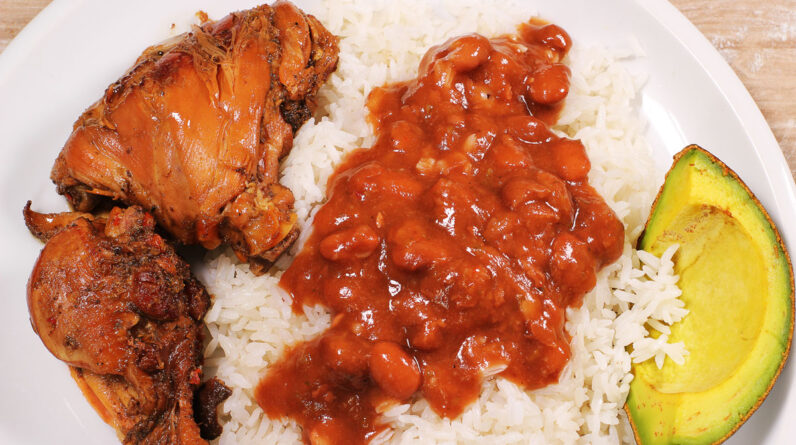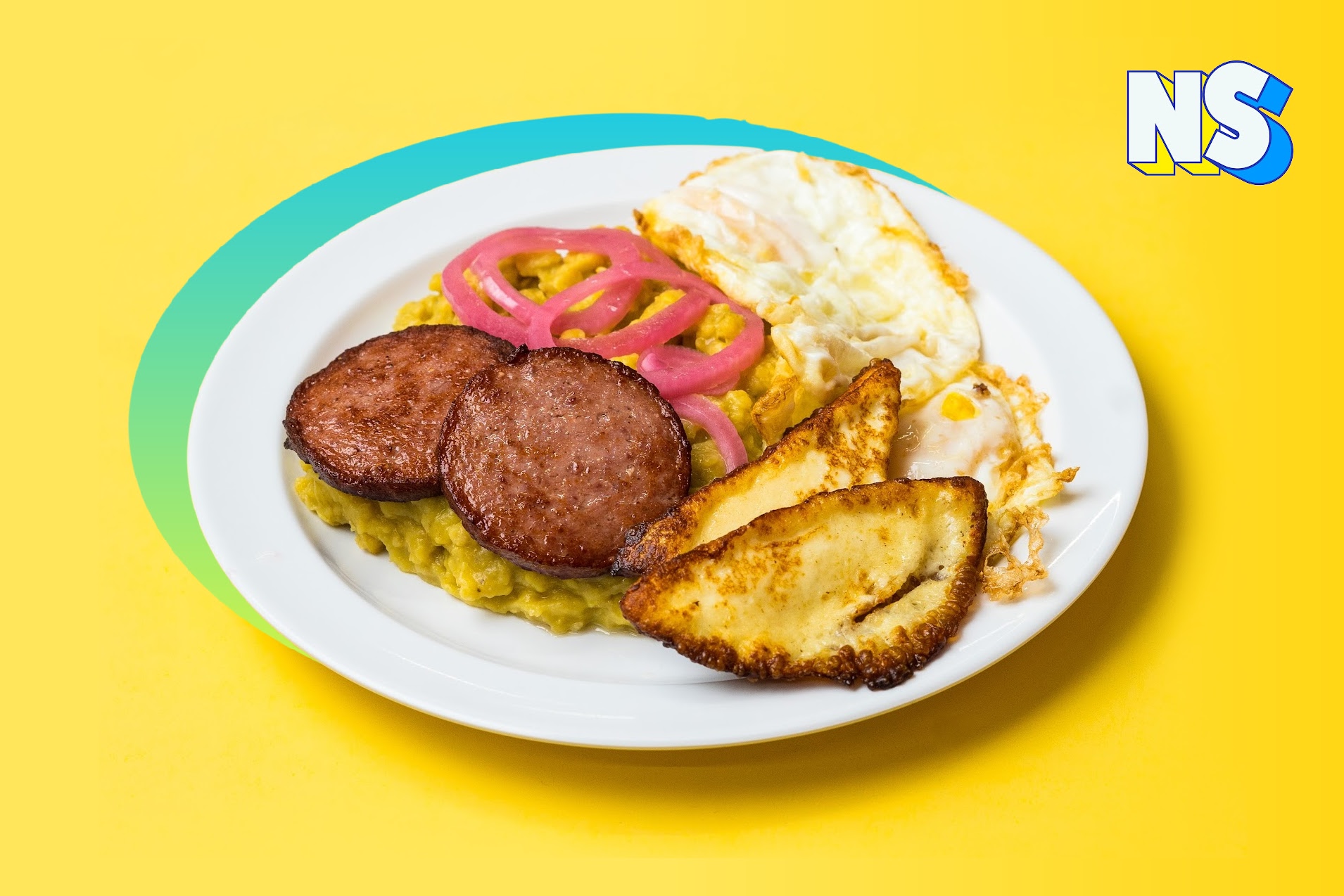
The national dish of the Dominican Republic is Sancocho, a hearty and flavorful stew made with a variety of meats and vegetables. This traditional dish showcases the rich culinary heritage of the Dominican Republic, combining indigenous, African, and European influences.
Sancocho is typically made with ingredients such as chicken, beef, pork, yucca, plantain, corn, and various herbs and spices. The combination of these ingredients creates a thick and savory stew that is enjoyed throughout the country. Whether served as a main course or shared at social gatherings, Sancocho is a beloved and iconic dish that encapsulates the vibrant flavors of Dominican cuisine.
The Origins Of Dominican Cuisine
The National Dish of the Dominican Republic showcases a rich culinary heritage that is deeply rooted in the country’s history. Dominican cuisine is a delightful fusion of flavors and techniques influenced by African, Taino, and Spanish cultures.
African culinary traditions have significantly impacted Dominican cooking by introducing ingredients such as plantains, yams, and various spices. The Taino people, who were the indigenous inhabitants of the island, contributed to the cuisine with their use of corn, cassava, and peppers.
Spanish colonization also played a pivotal role in shaping Dominican cuisine, bringing ingredients like rice, wheat, and olive oil. The combination of these influences has resulted in a diverse range of comforting and vibrant dishes.
Dominican cuisine reflects the country’s cultural heritage and sense of community, from hearty stews like sancocho to the iconic mangú, a dish made from mashed plantains. The flavors of garlic, onions, and various spices are prevalent, adding depth and complexity to the dishes.
Whether you’re indulging in a plate of chicharrón de pollo (fried chicken) or savoring a bowl of habichuelas con dulce (sweet beans), Dominican cuisine is a culinary journey that celebrates the nation’s vibrant past and mouthwatering flavors.
Traditional Dominican Dishes
Traditional Dominican dishes are a rich blend of flavors and ingredients. One popular dish is sancocho, a hearty stew made with various meats and vegetables. Another delicious option is mangú, which consists of mashed plantains served with fried onions and salami.
Moro de Granules offers a tantalizing combination of rice and pigeon peas cooked together with flavorful seasonings. For a tasty side dish or snack, try tostones, which are fried green plantains. Lastly, there’s la Bandera, the national lunchtime meal with rice, beans, meat, and salad. These dishes showcase the vibrant flavors and unique culinary heritage of the Dominican Republic.
Examining The National Dish Controversy
The national dish of the Dominican Republic is a topic of controversy. Some argue that there is a single national dish, while others believe it is a combination of several. This debate has sparked controversy surrounding the selection process.
Different regions and communities may have their own popular opinions and competing claims regarding the national dish. Some claim that “La Bandera,” a dish consisting of rice, beans, meat, and salad, is the true national dish, while others argue for dishes like “Sancocho” or “Mangú.”
Overall, this ongoing debate highlights the rich culinary tradition and diversity of the Dominican Republic, where various dishes hold significance and cultural importance.
The Iconic Dish: Mangú With Salami
Mangú, a traditional Dominican dish, is significant in the nation’s cuisine. Its roots can be traced back to the indigenous Taino people who inhabited the island before the arrival of Christopher Columbus. This flavorful dish consists of mashed plantains, typically green ones, boiled and then mixed with butter, garlic, and vinegar.
Mangú gained popularity due to its simplicity, taste, and versatile nature. It is often paired with salami, another favorite food in the Dominican Republic. The combination of Mangú with Salami has become so iconic that it is often considered the national dish.
The history and cultural significance of Mangú are deeply intertwined with Dominican identity. It represents the fusion of Indigenous, African, and European influences that have shaped the nation’s culinary traditions over centuries.
Preparing Mangú with Salami is relatively easy. The green plantains are first boiled until tender and then mashed with the desired seasonings. Meanwhile, the salami is fried until crispy. The dish is served with sautéed salami on top, adding a savory contrast to the smooth and creamy Mangú.
This satisfying combination of Mangú with Salami showcases the rich flavors and diverse cultural heritage of the Dominican Republic, making it a must-try for both locals and visitors alike.
Regional Specialties And Local Favorites
When talking about the national dish of the Dominican Republic, it is important to mention the various regional specialties and local favorites that make up the country’s diverse cuisine. One such dish is *locrio de Conejo, a flavorful rabbit rice dish that originates from the central region.
Another popular dish is la pepitoria, which is stewed chicken giblets in a rich sauce typically found in the Cibao region. Pastelón, a layered dish similar to lasagna, made with ground beef, plantains, and cheese, is a favorite in the eastern part of the country. Ensalada de Pulpo, an octopus salad, is a popular coastal dish for seafood lovers showcasing the country’s abundant marine resources.
Evolution And Adaptation Of Dominican Cuisine
In the ever-evolving world of culinary delights, Dominican cuisine stands out for its fusion of flavors and cultural influences. The national dish of the Dominican Republic has seen an intriguing evolution over the years, adapting to various global influences. As globalization took hold, Dominican cooking embraced international flavors and techniques, creating a unique blend that showcases the country’s culinary creativity.
Incorporating international cuisines into Dominican dishes has brought about a fascinating transformation. Traditional recipes have received modern twists as chefs experiment with new ingredients and cooking methods. This blending of traditional and contemporary elements adds an exciting dynamic to Dominican cuisine, ensuring that it remains vibrant and diverse.
The influence of globalization and the fusion of international flavors has elevated the status of Dominican dishes. Today, visitors to the country can indulge in culinary delights that reflect a rich tapestry of flavors, blending local ingredients with global influences.
From classic Dominican staples infused with international spices to creative reinterpretations of traditional dishes, the evolution and adaptation of Dominican cuisine continue to captivate taste buds and showcase the country’s gastronomic prowess.

Credit: nuestrostories.com
Frequently Asked Questions Of What Is The National Dish Of The Dominican Republic
How Is La Bandera Prepared?
La Bandera is prepared by cooking the rice and beans separately and then serving them together on a plate. The meat, either chicken or beef, is usually seasoned and cooked separately before being added to the plate. Fried plantains and a side salad often accompany this traditional dish.
What Are The Key Ingredients Of La Bandera?
The key ingredients of La Bandera are white rice, red beans, and either chicken or beef. Additional ingredients may include onions, bell peppers, garlic, adobo seasoning, and oregano. This combination of flavors and textures creates a hearty and delicious meal that Dominicans love.
Conclusion
The national dish of the Dominican Republic, called Sancocho, is a flavorful and hearty stew that showcases the country’s rich culinary heritage. This dish, with its diverse range of ingredients such as meat, vegetables, and herbs, represents the fusion of African, Spanish, and indigenous Taino influences.
From its aromatic flavors to its cultural significance, Sancocho truly epitomizes the vibrant and diverse food culture of the Dominican Republic. So, if you’re ever in the country, don’t miss the opportunity to try this iconic dish and immerse yourself in the flavors of the Caribbean.




